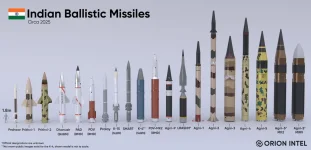- Views: 1K
- Replies: 8
2024 has proven to be a challenging year for Hindustan Aeronautics Limited (HAL) and its ambitious Tejas Mk1A fighter jet program. Despite high expectations and the strategic importance of this project for both the Indian Air Force (IAF) and India's indigenous defence manufacturing capabilities, HAL has faced significant hurdles and criticism due to production delays and inefficiencies.
The Tejas Mk1A, an advanced variant of the Light Combat Aircraft (LCA) Tejas, was poised to bolster the IAF's combat capabilities with its enhanced avionics, radar systems, and increased weapon-carrying capacity. However, HAL's production has been plagued by a series of setbacks.
At the core of the problem lies the delay in the delivery of GE F-404 engines. Initially scheduled to align with the production timeline, supply chain disruptions, particularly from a South Korean supplier facing financial difficulties, have significantly pushed back engine deliveries. To keep production moving, HAL has resorted to using Category B engines, which are essentially used or reserve units, a less-than-ideal solution.
Consequently, the first delivery of the Tejas Mk1A has been postponed multiple times, from an initial target of March 2024 to later dates in July, November, and now potentially into 2025. This has not only delayed the operational readiness of the aircraft but also raised concerns about HAL's ability to meet future production targets.
Beyond the engine issue, HAL has encountered broader supply chain problems affecting the timely procurement of various components, leading to a reduced production rate. The company's goal of increasing output to 16 aircraft per year has been hampered by these inefficiencies.
Furthermore, several new systems integrated into the Tejas Mk1A require certification, which has yet to be completed. These delays are critical as they prevent the aircraft from being fully combat-ready upon delivery.
The slow rollout of the Tejas Mk1A has direct implications for the IAF's combat strength. With the phasing out of older MiG aircraft and the need to maintain sufficient squadron numbers, these delays could affect strategic readiness, particularly in a region where air superiority is crucial for maintaining military balance.
While HAL has implemented contingency plans, such as using interim engines, these measures do not fully mitigate the impact of the delays. Efforts are underway to expand production capabilities with new lines in Nashik, but the effectiveness of this move remains to be seen given the ongoing challenges.
HAL's experience with the Tejas Mk1A in 2024 serves as a stark reminder of the complexities involved in scaling up indigenous defence production. While the ambition to produce state-of-the-art aircraft domestically is commendable, the execution has exposed vulnerabilities in supply chain management, production planning, and the potential need for greater focus in technology and manufacturing processes.

